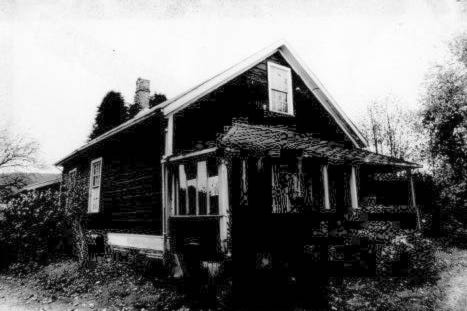Elida Peers | Contributed
Nowadays, we all recognize the Edward Milne name because of Edward Milne Community School.
The Milne pioneer home is not so well-known, still standing, though hidden behind the tree growth at the northeastern end of Sooke River bridge. While Milne descendants live in a fine modern home on the property today, they continue to respect the Milne heritage.
Today’s photograph was taken almost 40 years ago when Bill and Margaret Milne lived in the 1½-storey frame home. After the other early Sooke homes still standing, like Moss Cottage, the Muir homes of Woodside and Burnside, and Seagirt in East Sooke, it’s the pioneering structure built for a Scottish family, the senior Edward Milne and his wife Susannah, that remains a symbol of the lives of our earliest European immigrant settlers.
While the senior Milne couple died soon after they arrived in 1884 from Scotland, their eldest son Edward Milne Jr. took over the riverside property, where he and his wife Janet raised a family of sons: William, Edward and Fred, and daughters Ella and Agnes, besides daughter Janet who did not live to adulthood.
Besides farming, Edward Milne Jr. was an entrepreneur who built a general store at the western corner where Sooke River Road met Sooke Road. As most of his goods were brought in from Victoria by seagoing vessel, this required the building of wharves for offloading, and this was the origin of the name Milne’s Landing. In 1895, Milne obtained the postmastership for his store as well. In 1913, telephone service was begun in Sooke, and naturally, the switchboard was set up in the Milne home, with eldest daughter Ella as the operator.
When Ella married and moved away, Agnes (called Nan) became the operator, a position which in time meant a new telephone office and a substantial staff of operators, a function which remained in place with Nan as a chief operator until 1960, when dial telephones replaced the magneto service. Many knew the youngest son Fred Milne, who is remembered by the busy Fred Milne Park.
As a child walking home from school in the early 1940s, I often stopped at the Milne place to admire the beautiful peacocks; besides their raucous calls, they strutted about as if they owned the business!
•••
Elida Peers is the historian for the Sooke Region Museum.
editor@sookenewsmirror.com
Like us on Facebook and follow us on Twitter
